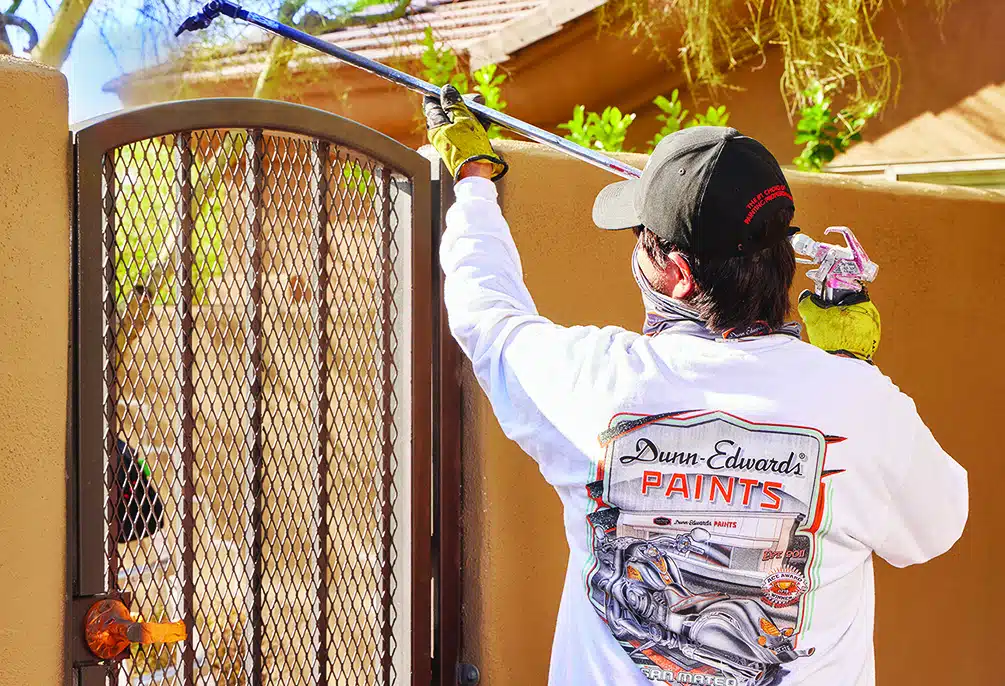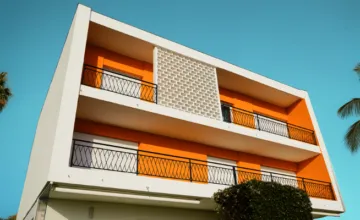Re-energize Your Community with Color
01/23/2018 | Dunn Edwards |
After decades of studies and research, there is little doubt that color affects us, often on a deep, yet subtle, level. And, whether it’s a new shirt, a car, a dining room or even a community property, we are drawn to colors that make us feel a certain way — happy, calm, energized or comforted — and they can influence how we learn, work and heal. Here are some of the most popular shades we are seeing in the following communal spaces:
Education
During the last several years, schools have enthusiastically responded to the idea that color inspires learning by painting buildings and classrooms in vibrant hues.
Studies have shown that learning environments painted with vivid colors translate into students with lower blood pressure, less aggressive and disruptive behavior, and better academic performance. This is because colorful surroundings enliven, enrich, energize and increase children’s’ brain function, helping eliminate eyestrain, monotony and boredom. Incorporating all the colors of the rainbow in the classroom can make children feel more attentive and happier to be at school. In fact, it’s amazing how a simple paint job can positively affect students’ abilities to stay on task, as well as increase retention and emotional well-being.
To see some examples of how schools are integrating color into the learning environment, check out these vibrant educational institutes around the world.
Workplace
If office morale and productivity are low and your walls are painted dull gray, it’s time for a makeover. While there are some universal colors that have positive effects on employees, the hues that work best depends on the type of work. Fact is, colors don’t just affect our mood, they impact our productivity, which is why it’s best to decorate your workspace with a vivid combination of stimulating, complementary shades that increase output and inspire creativity. Therefore, choose a combination of colors that elicits overall positive, productive feelings and allow individual workers to add personal, color touches that inspire them.
Red — A high-wavelength color, red is active and intense. If your workplace is dominated by physical activity, red increases the heart rate and blood flow, as well as inspires passion and emotion.
Blue — A great color to increase efficiency, blue also serves as a stabilizing, calming color that helps workers focus. If you do mind-work all day, consider painting the office blue but complement it with a bit of orange — introducing a warmer, more emotional color for balance.
Green — Providing an overall sense of well-being, green is an ideal color for people who work long hours. This nature-inspired shade creates feelings of balance and productivity, as well as reduces eye strain and fatigue.
Yellow — Often viewed by color psychologists as the shade of optimism, yellow is energetic and imaginative. Yellow elevates spirits and triggers innovation so use it in environments where artists, writers, designers, developers and other creative professionals work.
Healthcare
Just as color influences learning and productivity, it plays a major role in healthcare environments — but not all hues work in all medical settings. For example, while bright, cheerful colors in waiting and therapy rooms help reduce anxiety in patients (children, in particular), these colors are not well suited for critical care units, which need to be in blues, violets and greens to promote healing and calm, as well as reduce stress.
Here are some of the most effective, calming colors to consider for healthcare settings:
Orange — Orange is one of the best colors for hospitals and, especially, for children’s rooms. Orange exudes warmth and is associated with happiness. Therefore, orange is a leading shade in the healing chart.
Yellow — This bright, cheerful color can help stimulate energy and detoxify the body and mind to help facilitate healing. It can inspire vitality in those who feel lethargic — but avoid its overuse, as it can hamper digestive health and lead to insomnia.
Green — Green is known for its balancing and healing properties. It is a soothing color that represents growth and renewal. It also encourages comfort and equilibrium and is exceptionally valuable for those with heart, lungs and circulatory system issues.
Blue — This spiritual color is an important healing color, as it is linked with tranquility and calm. It helps lower blood pressure and can reduce a rapid heart rate. Blue is relaxing for the mind and body and is associated with the eye, ear and nose health.
Purple — Both purple and violet, as well as its related shades like lilac and lavender, are associated with spirituality. These colors are also linked to perception, higher consciousness and insight. Health-wise, these colors correlate to the cerebral and nervous systems.
2017’s Most Popular Community Colors
There are many options out there for your next community re-paint. To provide additional inspiration and guidance, here are a few of Dunn-Edwards' most popular colors of 2017: Swiss Coffee DEW341, Whisper DEW340, Navajo White DEC772, Cool December DEW383, Stonish Beige DEC716 and Fine Grain DE6213.
You can also click here to see some of our most popular neutral and non-neutral hues!

















